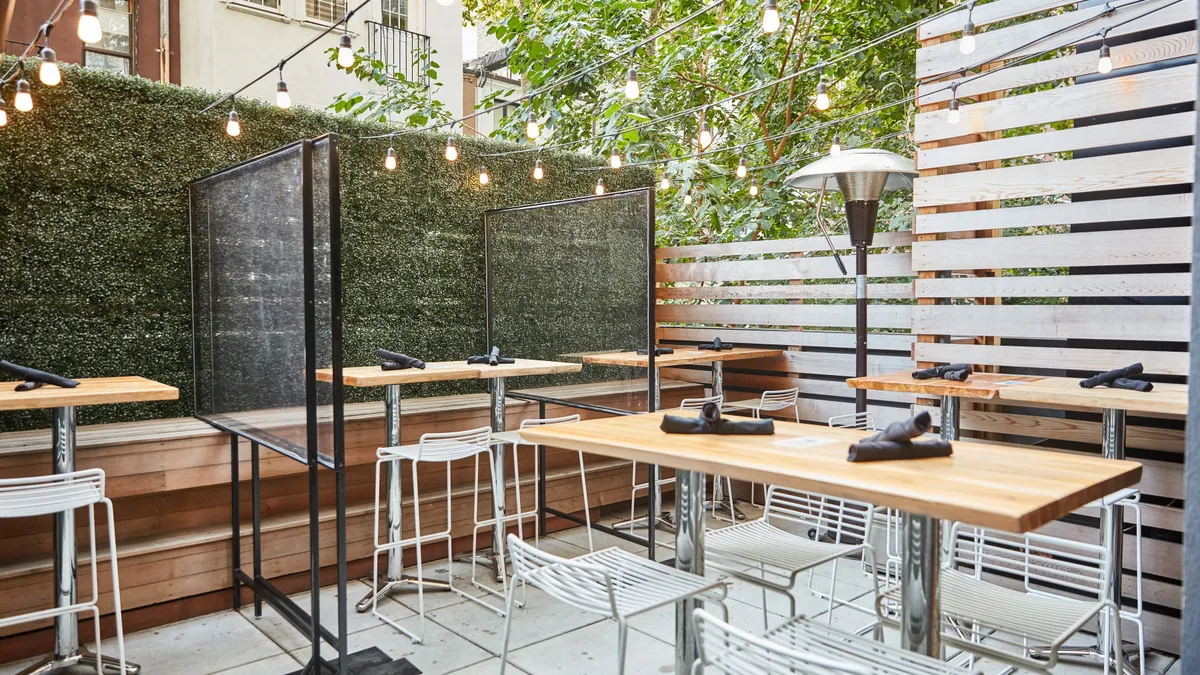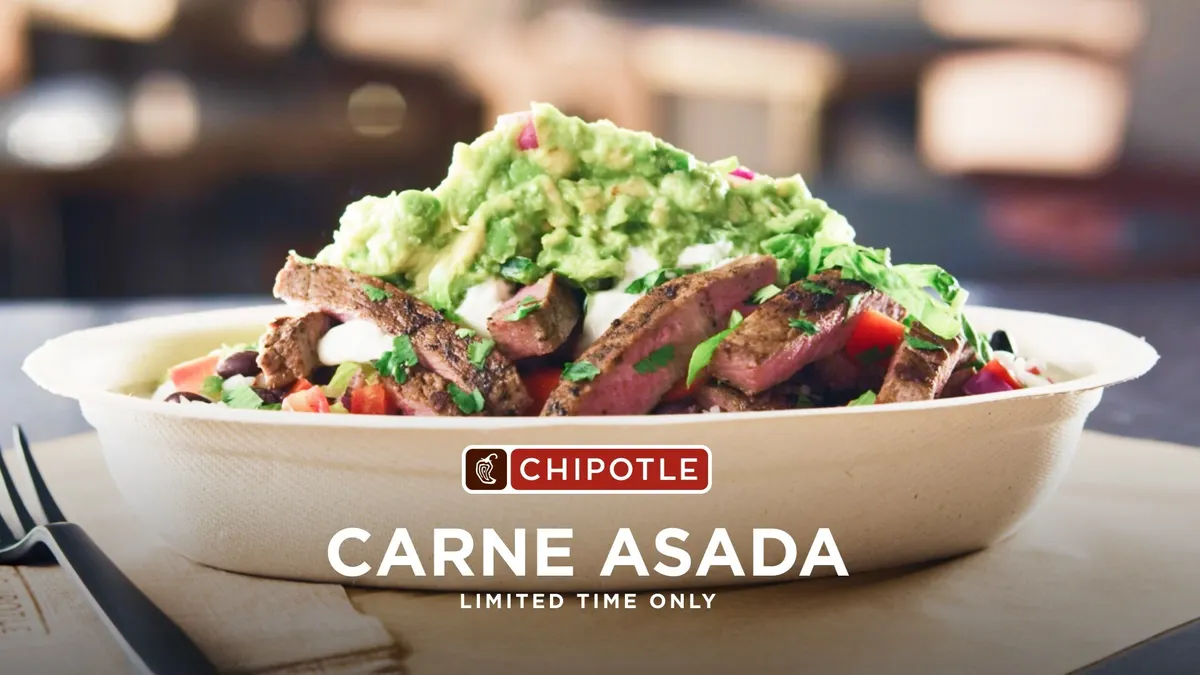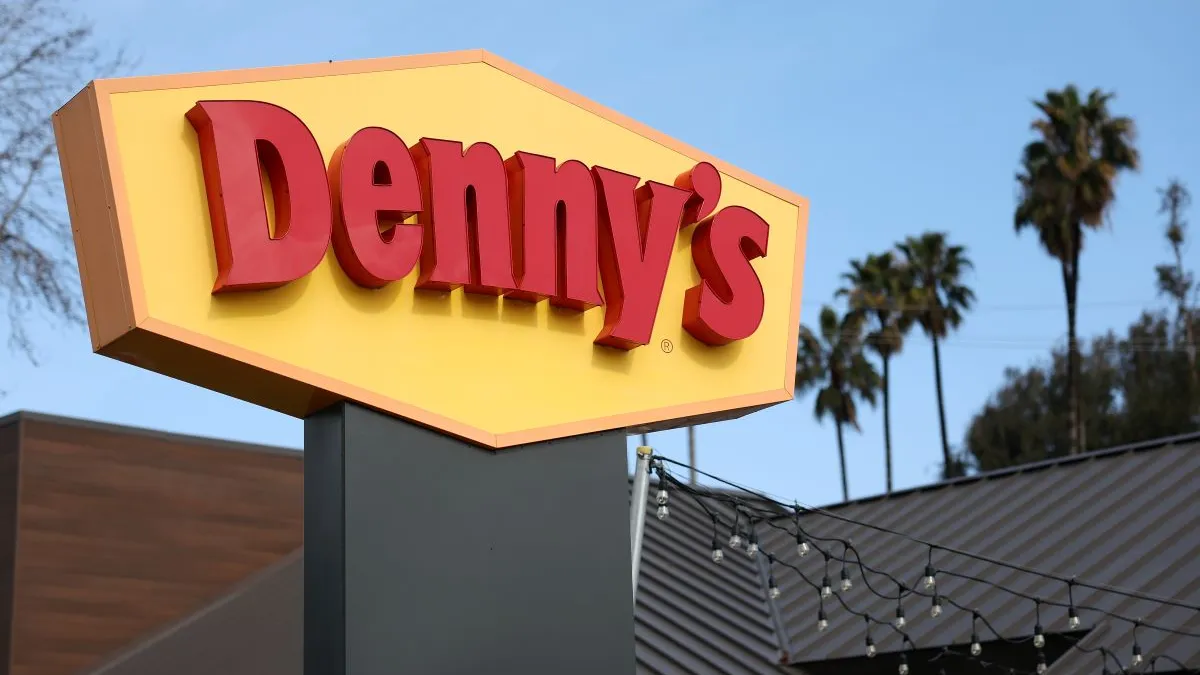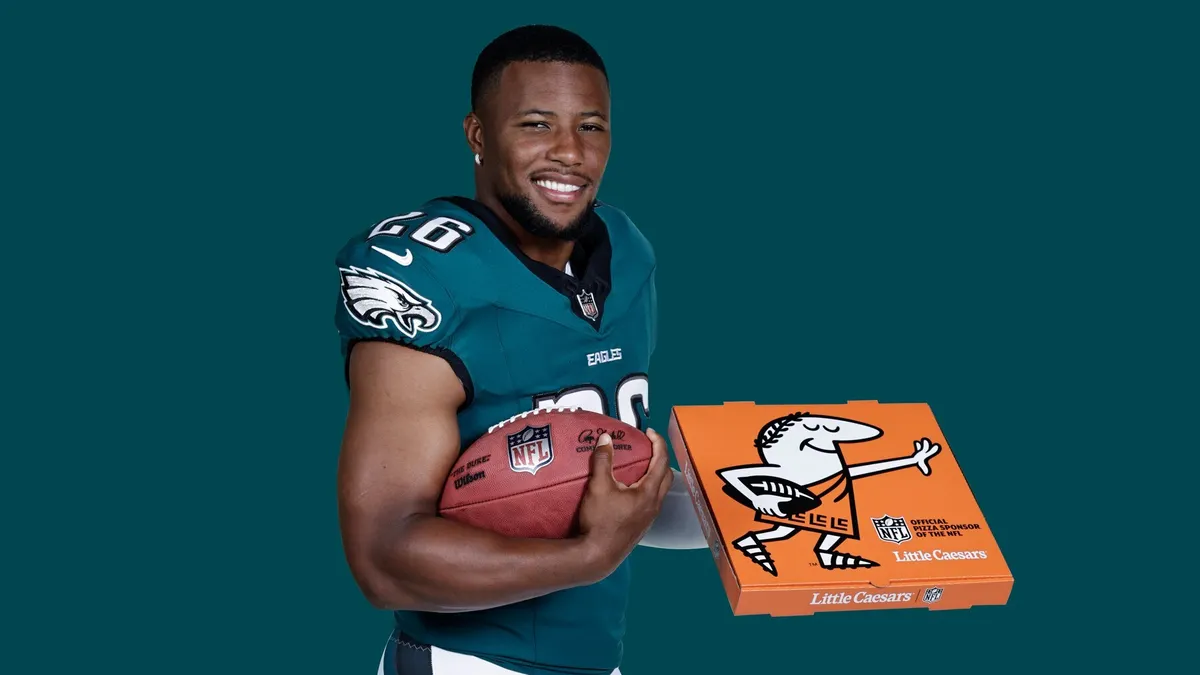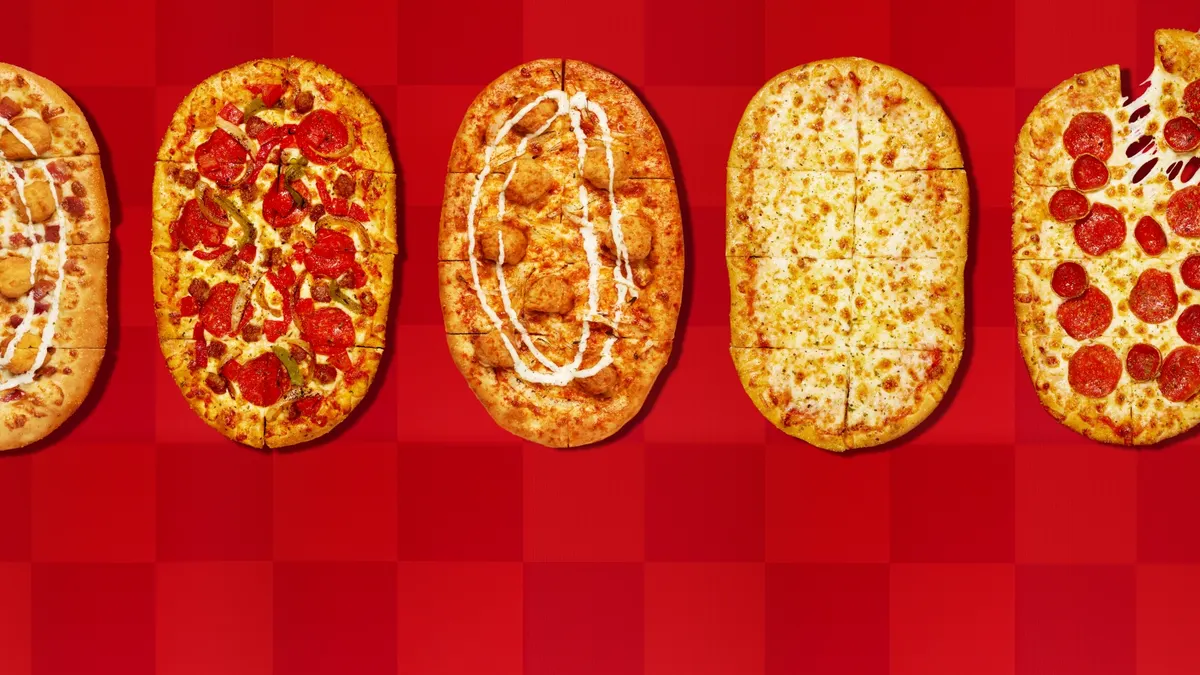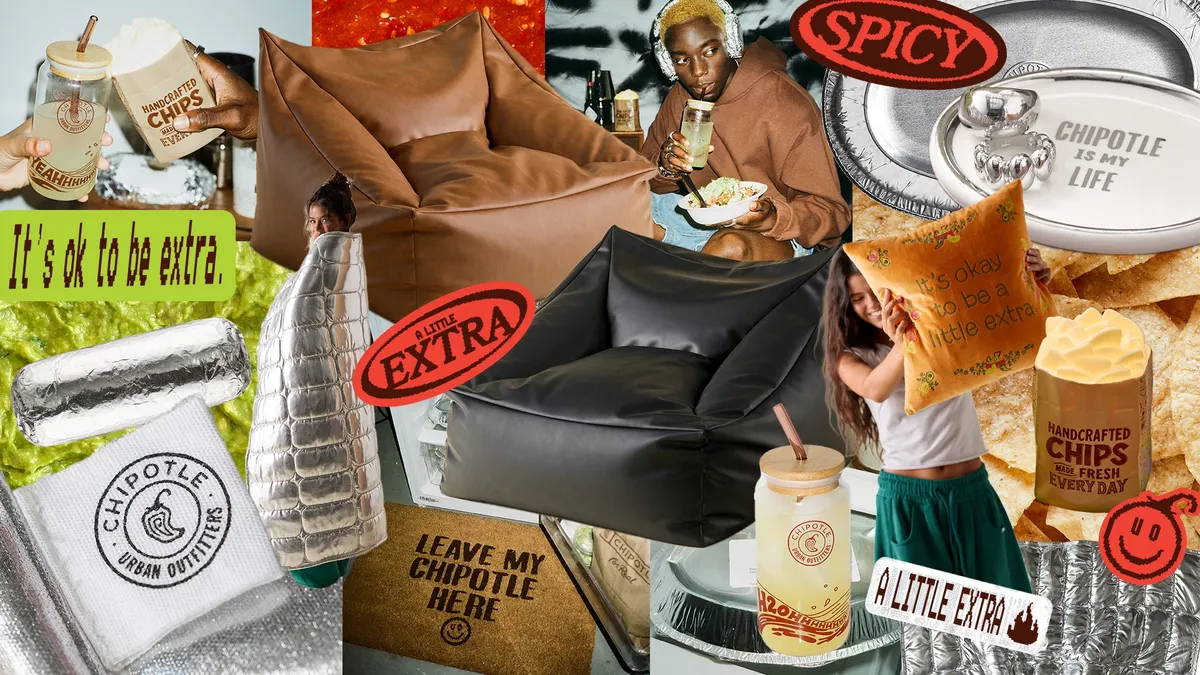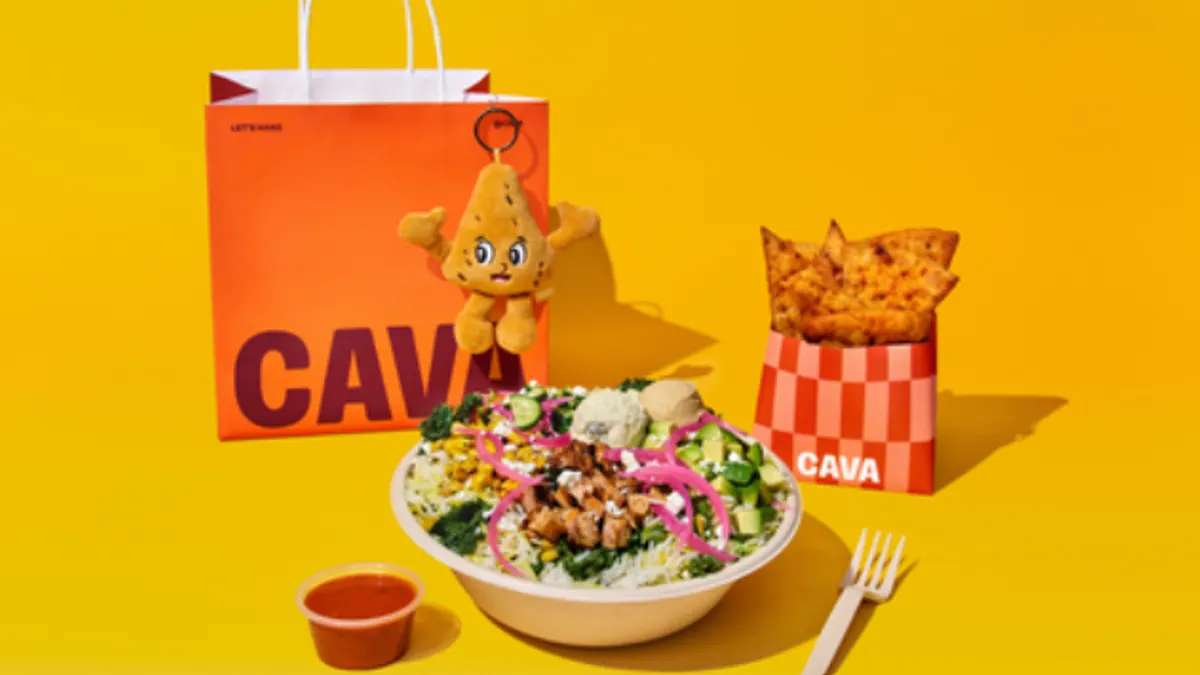It’s nine months into the pandemic, and long gone are the days that restaurant design concerns centered around Instagrammable wallpaper and elaborate show kitchens.
But the industry is beginning to think beyond the temporary fixes, like floor-to-ceiling plastic sheets or plexiglass between booths, that have managed to keep their businesses alive until now. As the new year approaches, restaurants are exploring ways to overhaul their layouts to accommodate diners’ simultaneous demand for experience with their concern over enclosed spaces, proximity to staff and other patrons — worries experts predict mark a permanent shift in customer perspective.
There is no uniform playbook for how to best design for a safe and engaging restaurant environment.
“In regards to the design and renovation process, while budgets have become slimmer and pandemic guidelines are ever-changing, a phased-approach to the hospitality design process has become key, which allows design work to continue at a rate that keeps up with still-evolving research,” Lesley Hughes-Wyman, co-founder and principal of MatchLine Design Group, said in an email.
Restaurant Dive spoke to a number of design firms and restaurateurs about the investments they are making to design for a changed restaurant future, as well as their predictions for which elements could become dominant design assets across segments.
“The trillion dollar question is which of these [consumer behavioral changes] is going to be permanent, and which is going to snap back and when,” said Stephen Jay, SVP and managing director of restaurant design firm Big Red Rooster. “When you start talking about restaurant design, you start talking about real estate. … The great unknown is how to invest capital in ways to get a smart return in the future.”
Minimizing indoor interaction, maximizing experience
On the whole, diners are still wary of eating inside traditional dining rooms — a sentiment that won’t be helped by a growing number of states and municipalities that are banning indoor dining and bar service for a second time since March shutdowns.
In August, 78% of consumers Big Red Rooster surveyed said they expect a significant change in a restaurant’s environment to make the experience safer, Jay said. The design firm takes pulse surveys once a month to trace changes in consumer behavior. While this expectation is more moderate than a peak of 93% in April, there is still persistent demand for dining rooms that have been overhauled to accommodate for COVID-19 safety, he said.
“We started researching what it is specifically that makes people feel most safe. These are the things that have direct implications for design,” Jay said.
Of all of the 20 different variables that Big Red Rooster asks consumers about, ranging from UV sanitizing light to plastic sneeze guards and restaurant robots, drive-thru and curbside pickup are the design elements that make people feel the most safe when engaging with a restaurant — bad news for casual chains and independent, urban eateries. This sentiment has crystallized as the pandemic stretches on, up from 49% in April to 58% in August, Jay said.
So, what design elements are necessary to coax diners back to on-premise operations? They could look something like the concept restaurant design-focused Blueplate Studio at Wilson Associates has developed. The modern dining room model, dubbed the “Glass Kitchen,” limits face-to-face interactions between parties, but anchors the dining space around a modern show kitchen.
Each table in the dining room is linked directly to the central kitchen, allowing food to be served directly to tabletops through a window, eliminating a traditional touchpoint with wait staff. Bi-folding tables fold out from the kitchen cube’s counter, which has a track on the perimeter to pass cutlery, and sliding glass panels that can open to distribute food or take orders.
The design has yet to be deployed in a real-world restaurant space, Blueplate designers Michael Lawless and Keiko Matsumoto said. The kitchen could be used as a finishing station for meals before they are distributed or for live cooking demonstrations to create an element of entertainment, Lawless said. The setup’s minimalist aesthetic resembles a traditional ramen shop, Matsumoto said, but could be customized to fit different design styles.
He added that air filtration for the glass kitchen would need to be considered by restaurants to ensure there is proper circulation within and outside of the glass container. For the dining space, Lawless and Matsumoto envision a motor coming from the ceiling that forces a strong air current down to the floor, creating a wall of air pressure between grouped bar seats and tables that could block airborne particles from wafting between seated parties.
Matsumoto said she thinks noise from these forced air wall concepts would be minimal, and believes the concept could be a minimalist alternative to the plastic or glass panels being used by several restaurants to promote distance between diners.
Lawless said this is a more compelling design layout, from a social aspect, than trying to build out a series of private dining rooms.
“That isn’t why we go to restaurants,” he said. “You do want some form of that social element. … We’re social beings and just being able to be in a crowd and see people is something that we’ve been starved of for so long that the idea with this [concept] was to try and make it feel as if you’re in a place that is busy and bustling … even if you’re not able to directly interact with the people around you.”
Not every designer agrees, however.
"We’re social beings and just being able to be in a crowd and see people is something that we’ve been starved of for so long… even if you’re not able to directly interact with the people around you."

Michael Lawless
Project manager, Wilson Associates
“For casual and fine dining, integrating more intimate dining zones will provide both the physical distancing that is now considered safe practice, and the visual distancing for patrons to feel more at ease and secluded,” Hughes-Wyman said.
That safe distancing needs to be clearly applied to "wayfinding," meaning how to help diners best navigate restaurants, as well, Hughes-Wyman said. Restaurants will need to develop cost-effective and flexible visual cues that help guide customers through the space in a way that minimizes communal touchpoints. This can be achieved through intentional furniture groupings or signage, she said.
“Properties are starting to use flooring materials that double as visual cues for spatial distancing. It’s easy to incorporate these materials within the design itself, getting creative with tile patterns that subtly offer the necessary signals without distracting or looking like an afterthought,” Hughes-Wyman said. “These flooring patterns are subtle enough that their immediate purpose — shifting wayfinding to encourage social distancing — is not immediately, if at all, obvious; post-pandemic, these patterns will continue to function as mere design details, rather than a blatant pandemic-driven design initiative.”
For the Glass Kitchen concept, Lawless and Matsumoto envision a series of glass garage doors on the restaurant’s exterior that line up with tables. Patrons can signal that they have arrived for their reservation on an app, which prompts one of the doors to lift so they can enter, eliminating the need for a traditional host position.
Overall, the Glass Kitchen model would be more ideal for a new build than a retrofit, Lawless and Matsumoto agreed, but they think the model could be applied to all restaurant segments. Still, the model’s emphasis on bar seating could make application at a casual chain challenging because it would undermine guest expectations for space where they can linger and chat with guests in their party. The cost for the buildout would depend on the finishes a restaurant chooses to use and the furniture, fixtures and equipment, and the concept is scalable depending on a prospective footprint’s needs, Lawless said.
“Until we are post-COVID and the world is back to ‘normal,' each restaurant segment will have seen varying degrees of design evolution.” Hughes-Wyman said. “For example, movable divider walls meant to be placed between tables, — such as Yellow Goat Design’s highly graphic, acrylic panel screens — can assist in keeping with the flex- configurations. These types of graphic, flexible configurations are customizable, so can be altered to fit the aesthetic of the establishment.”
Shifting design dollars outside
Al fresco dining solutions, either made possible by existing patio or rooftop space or by municipal mandates allowing restaurants to expand seating areas into the sidewalk and street outside of their brick-and-mortar footprint, have been a key to survival for many. Even as dining room closures lifted in some states, some diners are still more comfortable eating in open-air environments.
But looking to a future post-pandemic environment, where street seating programs could be rolled back, not every restaurant will have the advantage of outdoor seating, Ashley Kirkland, director of interior architecture at GrizForm Design Architects, said. There also won’t be enough available real estate featuring patio space, especially in urban markets, so it will be important for restaurants to design for the perception of open space to attract wary diners, Kirkland said.
“An opportunity would be to start using more operable walls and operable windows to… [create] an indoor-outdoor experience and give that perception of fresh air,” Kirkland said. “This gives existing spaces flexibility… and is a nice way to get that [outdoor] connection.”
These design assets will be especially crucial in colder climates, said Marty McCauley, design director at Nelson Worldwide. Nelson is an international retail and hospitality architecture and design firm that has worked with chains including Subway and Yum Brands restaurants.
"An opportunity would be to start using more operable walls and operable windows to… [create] an indoor-outdoor experience and give that perception of fresh air."

Ashley Kirkland
Director of interior architecture, GrizForm Design Architects
“Pursuing outdoor dining in markets like Southern California or Florida makes sense because you are able to take advantage of the space during all four seasons … but in Minnesota, where you only have three months of decent weather … there are creative ways to simulate or create the perception of outdoor dining,” McCauley said.
Kirkland predicts that steep demand for outdoor space will lead restaurants to make arrangements with neighboring eateries to share outdoor space and split the costs in the same way that restaurants are partnering to share kitchen space to minimize overhead.
Washington, D.C.-based architecture and design firm //3877 assisted with a shared outdoor dining design layout for an entire block in New York City, for example, because 100% of that area was made up by restaurants, co-founder and principal David Tracz said. The restaurants wanted to optimize their seat count by sharing that outdoor space.
“We’ve helped our existing restaurant clients to ‘dress up’ the sidewalk so it still feels like part of the restaurant and not some awkward separate entity. This is important when expanding into outdoor dining during the pandemic,” Tracz said in an email. “Making sure this area is an extension of the existing restaurant will help patrons — those returning, and those that are brand new — to have a dining experience that aligns with their pre-pandemic expectations and perception of the brand.”
Because parking is at such a premium in cities, however, it could be challenging to convince local jurisdictions to allocate this kind of space for a restaurant streetscape once the pandemic ebbs, Tracz said.
Merging physical and digital experiences
Increased diner interest in outdoor seating and expanded outdoor dining capacity will also shift restaurant marketing dollars away from Instagrammable moments inside the dining room toward eye-catching, branded moments around a restaurant’s exterior. GrizForm recently designed a street art graphic outside of an ice cream and cookie store to encourage the kind of photos diners often take of elaborate tilework inside restaurant bathrooms so the establishment can still have a buzzy design moment that encourages social media sharing.
Restaurants need to integrate the diner’s digital experience of their brand with their physical space in ways that go beyond sparking potential Instagram posts, however. Diners are more digitally engaged now than ever before, bucking pre-pandemic concerns that downloading branded mobile apps was too big an ask of a customer base, McCauley said.
“[The pandemic] has catapulted everyone to be thinking about innovation in real time… and [figuring out] how we integrate digital into the experience but really enhance that touchpoint for the consumer, and what does that mean when it translates to the built environment,” McCauley said. “Brands have a chance to establish themselves more emotionally and functionally to guests … but we need the tools and the communication and the journey to support that digital experience.”
In order to marry digital and physical restaurant experiences successfully inside and out, whether that be via QR code menus or designated pickup parking spaces, restaurants need to “think from a future state ... and site solve, rather than solve for interior design [exclusively],” McCauley said.
"Brands have a chance to establish themselves more emotionally and functionally to guests … but we need the tools and the communication and the journey to support that digital experience."

Marty McCauley
Design director, Nelson Worldwide
“I think there's a lot of opportunity, one, to just think about that idea of programming the site to provide these streams of access, whether it's curbside, or to go or delivery or drive thru order, adding a fast lane of some kind, and then adding experience in and around that that kind of builds upon the functional to define the brand signature and then thinking about how that translates to the interior and how we can think about the experience as more of a showroom than a traditional dining room,” he said.
Innovating in a way that stands out will be easier said than done because there will be a lot of parody among restaurants adopting one another’s strategies, McCauley said. He predicts the evolution of restaurant design will parallel the shifts in retail experience over the past few years, where prototypical store experiences have transformed to more showroom experiences that visually communicate a brand’s ethos with more focus.
“My charge to any of the brands … right now we’re solving for the functional … are you doing that through the lens of how your brand needs to express uniquely?” McCauley said. “That can be a challenge to anyone who’s looking to innovate with new access to [their] site or within and around [their] building, because everyone is going to be doing it. So how do you do it like you?"



